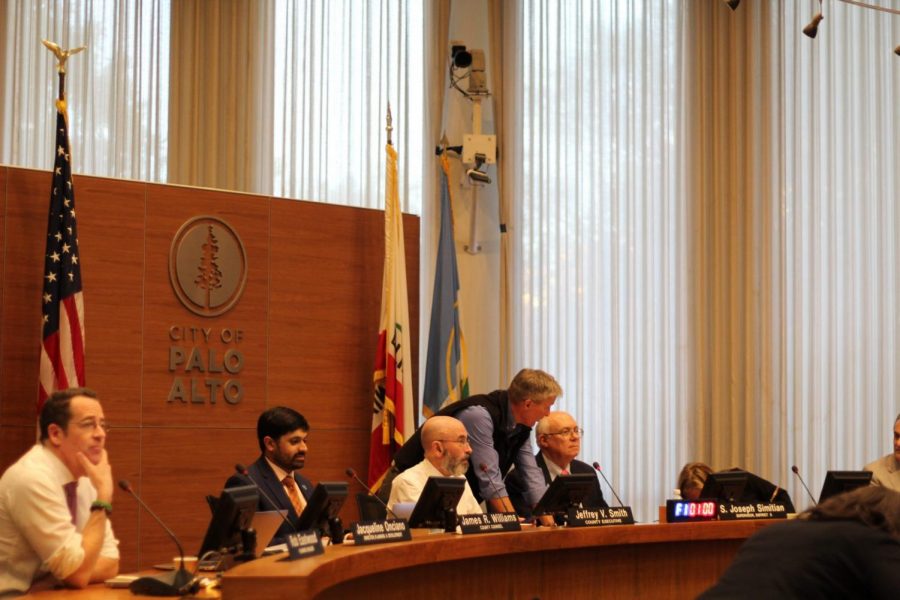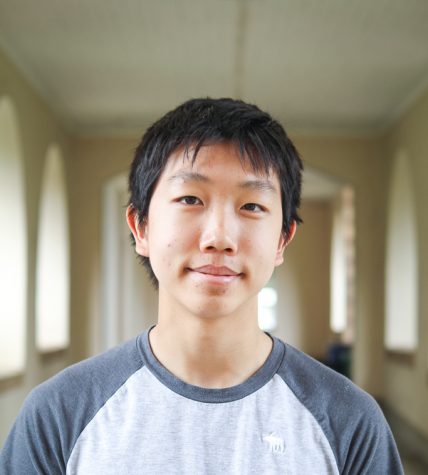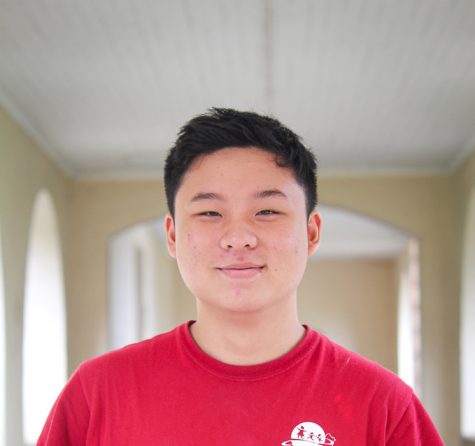Austin bemoans wasted energy as Stanford drops GUP
November 2, 2019
The superintendent of Palo Alto’s school district says he is disappointed by the loss of “invested time” as Stanford University on Friday pulled out of an enormous, multi-party development agreement that would have paid $138 million over 40 years for hundreds of new students to attend local schools.
Superintendent Don Austin, who represented Palo Alto Unified School District in negotiations with Stanford, on Friday confirmed in a statement to The Paly Voice that the tentative agreement reached in April between PAUSD and Stanford will not be upheld. “[Stanford isn’t] building anything, so there is nothing to mitigate,” Austin said. “There is no negative impact. It amounts to a lot of invested time with nothing for anyone in the end.”
Stanford originally submitted an application in Nov. 2016 to extend its General Use Permit through 2035. The extended Permit included plans to build 3,150 tax-exempt housing units for students, faculty and staff. In April, Stanford and PAUSD reached a tentative agreement which included $138 million in community benefits to mitigate the financial impact of enrollment at PAUSD from students living in tax-exempt Stanford housing units.
While the district’s side agreement appears to have died along with the GUP, the fate of secondary collaborative efforts between Stanford and the district are less clear.
Austin stated in an interview last month with The Paly Voice that Stanford is not legally required to pay anything over a one-time payment of $4 to $5 million in impact fees. For this reason, School board member Shounak Dharak praised the deal because it went beyond what Stanford was legally obligated to pay.
“The deal with Stanford is simply a floor,” Dharap told The Paly Voice before the deal fell through. “In the event that negotiations between the County and Stanford fall through — in the event that the GUP isn’t able to get us anything more than impact fees — we’ll at least have something.”
Stanford also confirmed that it will no longer pay the previously agreed upon $138 million in community benefits under the tentative agreement with PAUSD. The press release that was made public Friday stated that PAUSD’s tentative agreement with Stanford “was tied to the university’s land use plans outlined in the General Use Permit application, which are no longer moving forward.”
Though $121.9 million of the $138 million in community benefits was to be paid on a per-student basis and thus tied to Stanford’s construction of new housing, Stanford also agreed to pay $15 million for the construction and furnishing of “an innovative space where students and faculty from the two institutions will expand their collaboration,” according to a press release by PAUSD.
The $15 million, Austin confirmed, will no longer be provided to PAUSD.
Dharap was quoted in an article published in Palo Alto Online on Oct. 22 saying that the tentative agreement was “not conditional on a development agreement.” In the same article, Austin also maintained that the tentative agreement did not depend on a development agreement between Stanford and the County.
However, the mitigation agreement, including the $15 million for an innovative space, was conditional on Stanford actually building new housing units, according to Austin.
Editor’s note: a previous version of this story stated that Dharap and Austin were quoted in a Palo Alto Online article saying that the tentative agreement between Stanford and PAUSD was not dependent on a development agreement. While this is accurate, the newer version of the story notes that the tentative agreement was conditional on Stanford actually building new housing units under the proposed GUP.
The deal had originally entailed $138 million in benefits from Stanford to PAUSD over the course of 40 years, including a payment per K-12 student living in Stanford housing and attending a PAUSD school. The per-student payment would have started at $5,800 in year one of the deal and would have increased by 2% for the first 20 years of the deal, then decreased by 2% for the last 20 years of the deal, for an average of $7,050 over the 40 year life of the deal, according to Austin. As it costs roughly $21,000 per year to educate each PAUSD student, many groups in the Palo Alto community have raised concerns over a potential deficit.
Editor’s note: A previous version of this story stated that Stanford’s mitigation payment per K12 student living in the proposed housing units was $5,800. The $5,800 figure represents Stanford’s payment for one student for Year One, and the most recent version of the story notes that the average payment over 40 years would be $7,050 per student. (See The Paly Voice’s detailed analysis of the deal here.)
As Santa Clara supervisors negotiated with Stanford over the specifics of the development agreement, the community responded with backlash over the financial implications of increased enrollment in PAUSD. Some have made demands for “full mitigation,” calling for Stanford to fully pay the cost of educating PAUSD students who live in the proposed Stanford housing units.
The Palo Alto Council of Parent Teacher Associations organized a protest on Oct. 22 in front of City Hall where a public hearing on the GUP was to take place. The PTAC made demands for Stanford to fully mitigate the cost of educating PAUSD students living in Stanford housing.
As, according to Austin, Stanford is not building any new housing that needs to be mitigated, so the threat to Palo Alto Schools raised by PTAC and others no longer seems imminent. Even though the tentative agreement will no longer be in effect under the agreed upon terms, Stanford has indicated it may be open to providing other concessions to the community.
“Stanford is committed to continuing its partnership with PAUSD as part of the university’s longer-term campus land use plans,” the press release stated. “As part of a development agreement, Stanford also had proposed $30 million in funding for local transportation improvements in Palo Alto and San Mateo County.”
Moving forward, Austin remains hopeful that even though the tentative agreement between the district and Stanford fell through, the process of negotiations has benefitted the relationship between both parties. “Stanford and PAUSD became stronger partners through the process and will continue to work together,” Austin said.










![A protester in a chicken suit wearing a taco hat with the words “Cluck Trump” at the “No Kings” Democracy Fair in Palo Alto on Saturday. Protestor Mary Chan said she and her husband are horrified at the state of science and medicine in America. “What he [Trump] is doing by defunding scientific research is destroying our academic medical centers, and he’s [Trump] bankrupting rural medical centers,” Chan said. “We will have lasting negative impacts on American health for decades.”](https://palyvoice.com/wp-content/uploads/2025/10/11562FFE-9912-4152-BB01-582426B52ECB_1_105_c-225x300.jpeg)